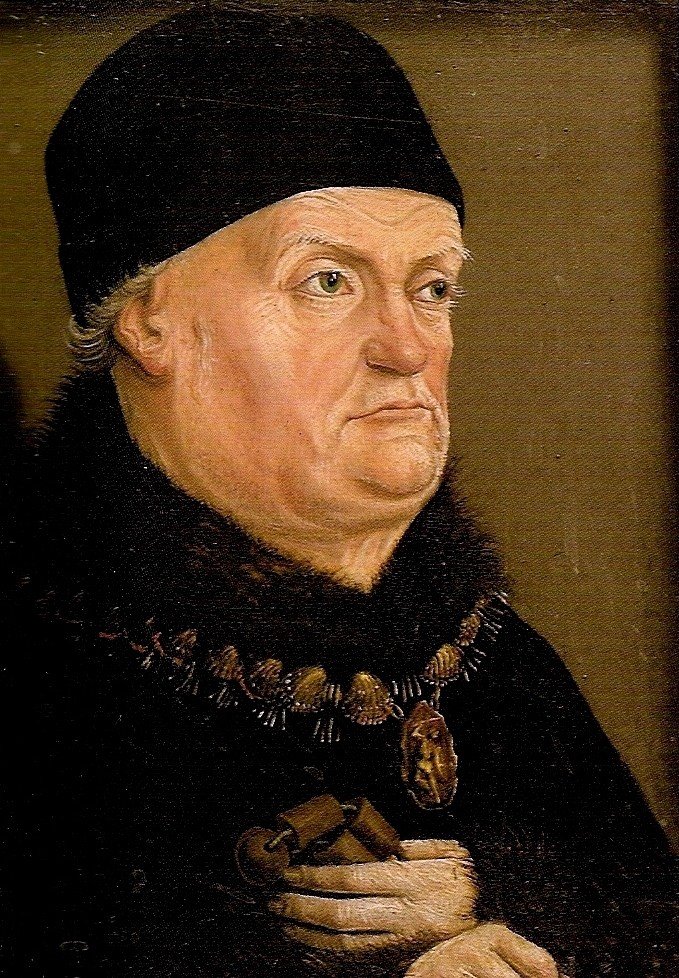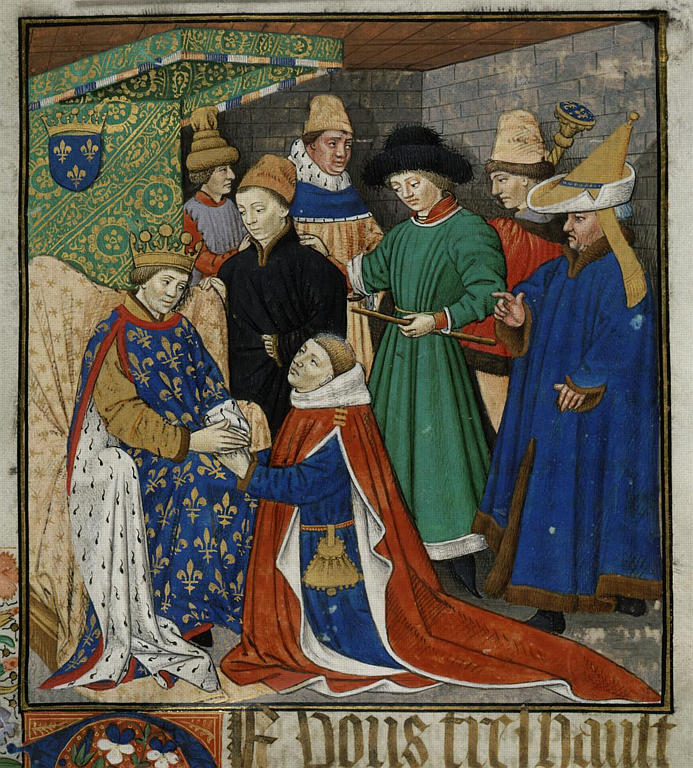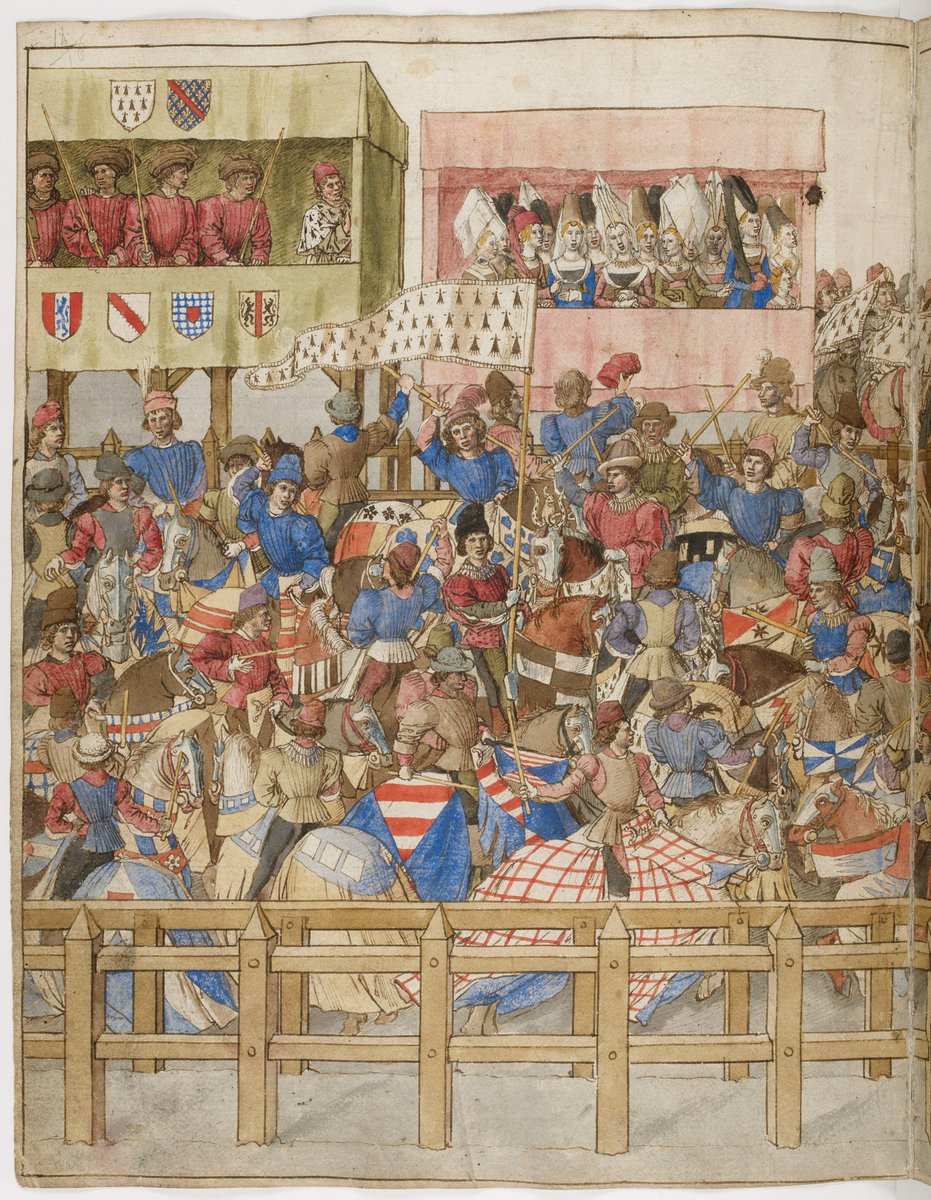
Urs Graf (c. 1485 - c. 1528) was a Swiss mercenary who served in the Italian Wars.
He lived a violent and troubled life.
But he was also a very talented artist.
His art depicts what he saw and experienced. It will show you a different, darker side of Renaissance! 🧵


He lived a violent and troubled life.
But he was also a very talented artist.
His art depicts what he saw and experienced. It will show you a different, darker side of Renaissance! 🧵

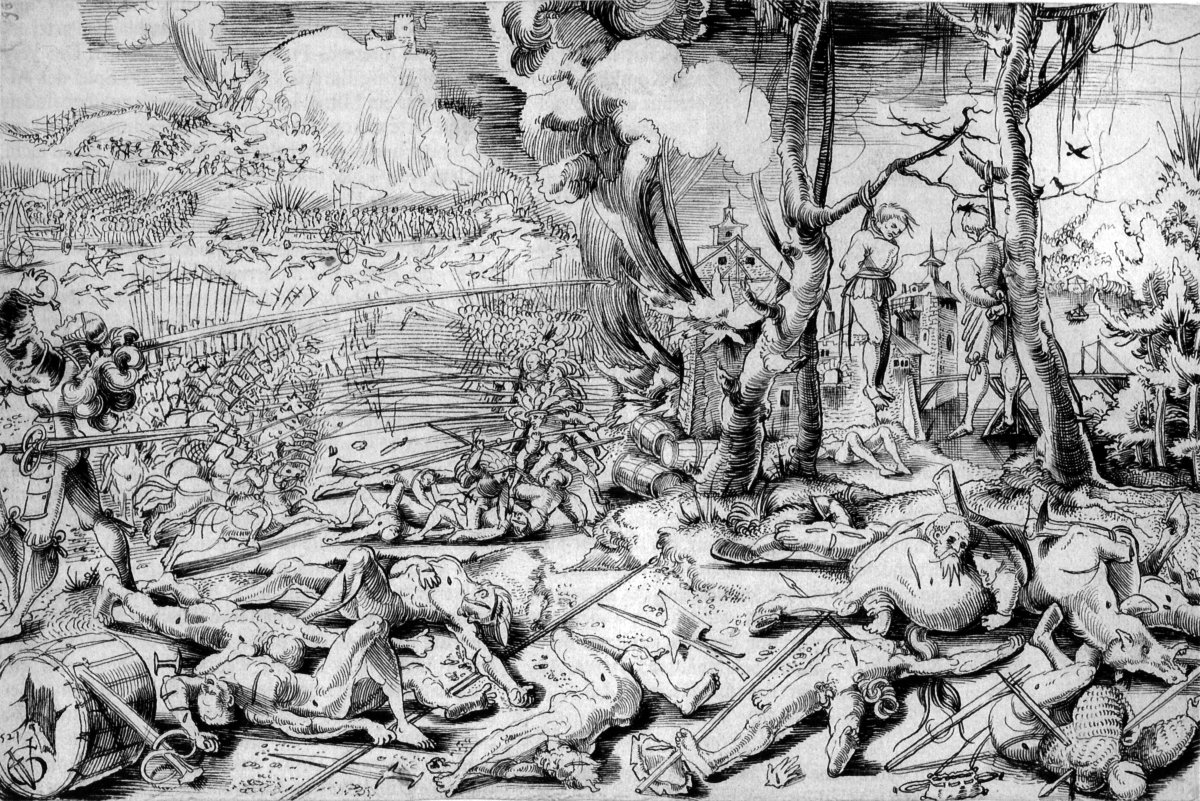
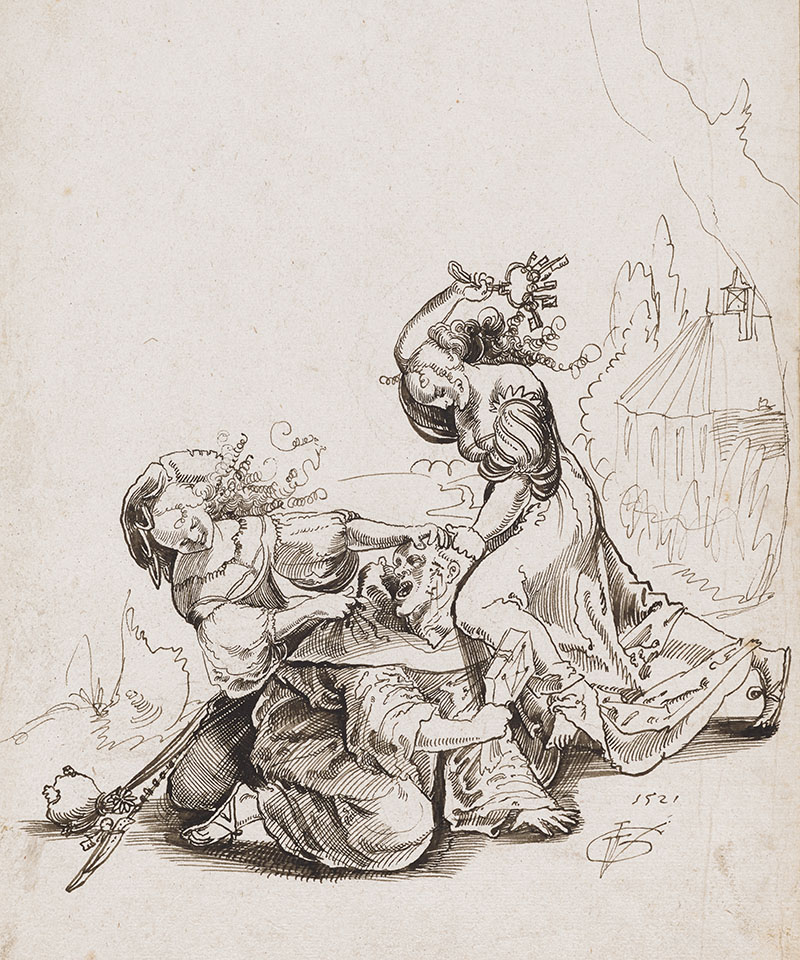
Urs Graf was born in the town of Solothurn around 1485. His father was a goldsmith in Zürich and he began to learn this trade.
But he also learned the art of making woodcuts and eventually made enough money to buy a citizenship in Basel in 1512.
One of his early works.
But he also learned the art of making woodcuts and eventually made enough money to buy a citizenship in Basel in 1512.
One of his early works.

After settling in Basel Graf married Sibylla von Brunn who was from a prestigious family.
But Graf did not have good reputation and his wife was disinherited by her parents.
He soon came in conflict with the law for abusing his wife and consorting with prostitutes.
But Graf did not have good reputation and his wife was disinherited by her parents.
He soon came in conflict with the law for abusing his wife and consorting with prostitutes.

It seems that Graf was always drawn to the underworld.
Even though his career as an illustrator was going well, Graf began serving as a mercenary as well.
The ongoing Italian Wars would provide plenty of opportunities for soldiers of fortune like him and would mark his life.
Even though his career as an illustrator was going well, Graf began serving as a mercenary as well.
The ongoing Italian Wars would provide plenty of opportunities for soldiers of fortune like him and would mark his life.

In this drawing Urs Graf depicted a Swiss council of war during the 1512 campaign for the Holy League alliance to drive the French out of Milan.
Graf participated in Swiss victory over French at Novara in 1513 after which they raided French lands all the way to Dijon.
Graf participated in Swiss victory over French at Novara in 1513 after which they raided French lands all the way to Dijon.

The Swiss gained a lot of loot following their successful campaigns.
They were renowned as best warriors in Europe.
But the Italian Wars were taking its toll on everyone. It was a brutal conflict that began involving all the European superpowers, and casualties were huge.
They were renowned as best warriors in Europe.
But the Italian Wars were taking its toll on everyone. It was a brutal conflict that began involving all the European superpowers, and casualties were huge.

The Swiss were the masters of warfare with long pikes, but others were soon catching up, namely their big rivals German Landsknecht mercenaries.
Incorporation of arquebuses and cannons into tactics also meant increased casualties.
Mercenary life was brutal and often short.
Incorporation of arquebuses and cannons into tactics also meant increased casualties.
Mercenary life was brutal and often short.

Faced with likelihood of death, Urs Graf and many other mercenaries tried to enjoy life as much as possible, living recklessly and spending the money they looted.
Graf liked to depict mercenaries next to prostitutes.
The popular saying at the time was "no whores, no war".
Graf liked to depict mercenaries next to prostitutes.
The popular saying at the time was "no whores, no war".

A mercenary returns, gambling away all his money!
Urs Graf loved depicting his own experiences as a mercenary.
Graf kept returning to Basel after his campaigns but just ran into more trouble there.
In 1518 he was charged with attempted murder and forced into exile.
Urs Graf loved depicting his own experiences as a mercenary.
Graf kept returning to Basel after his campaigns but just ran into more trouble there.
In 1518 he was charged with attempted murder and forced into exile.

Graf was likely haunted by the memories of war, unable to adapt to normal life.
In this eerie drawing of the battle of Marignano which took place in 1515, Graf depicted in very striking way the brutality and atrocities he witnessed as a mercenary in the Italian Wars.
In this eerie drawing of the battle of Marignano which took place in 1515, Graf depicted in very striking way the brutality and atrocities he witnessed as a mercenary in the Italian Wars.

Marignano was a devastating defeat for the Swiss. The French unleashed their full war machine on them, combining their own pike infantry with cannons and armored knights.
It was fought over two days and the sight after the battle was gruesome. Graf captured this in his drawing.
It was fought over two days and the sight after the battle was gruesome. Graf captured this in his drawing.

Graf didn't shy away from depicting the dark and violent side of his society even during peace.
The Execution Ground was another one of his works which depicts death and brutality.
He also clearly felt a connection with the underworld as someone who often broke the law as well.
The Execution Ground was another one of his works which depicts death and brutality.
He also clearly felt a connection with the underworld as someone who often broke the law as well.

Camp follower next to a hanged soldier.
Hangings were a common punishment during the Italian Wars but not many artists paid attention to them.
It seems that images of hanged men really stuck in Graf's memory from the campaigns he took part in, and he depicted them in his art.
Hangings were a common punishment during the Italian Wars but not many artists paid attention to them.
It seems that images of hanged men really stuck in Graf's memory from the campaigns he took part in, and he depicted them in his art.

In 1520 Graf was allowed to return to Basel again.
He had earned enough money from campaigns to buy a house.
But family life was not for him. He began serving as a mercenary again in 1521 as a new war in Italy started and the French king was now hiring Swiss mercenaries again.
He had earned enough money from campaigns to buy a house.
But family life was not for him. He began serving as a mercenary again in 1521 as a new war in Italy started and the French king was now hiring Swiss mercenaries again.

After Graf joined the campaign he made this drawing the same year, showing the distrust Swiss mercenaries had for the rival German Landsknecht mercenaries as they were both hired by the French this time and had to work together. 

Urs Graf shows the mindset of a typical mercenary of the time. Death was always close and he needed to make the most of what he had while he was still alive.
On this woodcut from 1524 the skeleton with a sand watch reminds the two mercenaries that the time is ticking.
On this woodcut from 1524 the skeleton with a sand watch reminds the two mercenaries that the time is ticking.

One of Graf's early works Mercenary Love from 1511 depicts his lifelong obsession with mercenary life, full of danger, excitement and pleasure while death awaits.
He chose to live this kind of life even though he had talents to live a more normal settled life.
He chose to live this kind of life even though he had talents to live a more normal settled life.

Even in his 40s Urs Graf could not settle into the normal life.
He kept getting imprisoned and kept serving as a mercenary when he could despite his relatively old age.
He had problems with alcoholism and continued visiting prostitutes which he often depicted in his art.

He kept getting imprisoned and kept serving as a mercenary when he could despite his relatively old age.
He had problems with alcoholism and continued visiting prostitutes which he often depicted in his art.


Graf also loved depicting grotesque characters.
This is Graf's wood engraving from 1523, "Naked female fiddler with an old fool from Basel".
He was obsessed with social outcasts and obscure figures from the underworld.
This is Graf's wood engraving from 1523, "Naked female fiddler with an old fool from Basel".
He was obsessed with social outcasts and obscure figures from the underworld.

It is not known how Urs Graf's life ended.
In 1527 he disappeared from Basel's records completely and his wife remarried in 1528.
But apparently there is one of his works dated from 1529 so it is possible he abandoned his family and kept wandering around as a mercenary.
In 1527 he disappeared from Basel's records completely and his wife remarried in 1528.
But apparently there is one of his works dated from 1529 so it is possible he abandoned his family and kept wandering around as a mercenary.

We will never know what the fate of Urs Graf was.
Most probably he died as he lived, violently.
But he left us his art which gives us a unique perspective of the Renaissance period.
Most probably he died as he lived, violently.
But he left us his art which gives us a unique perspective of the Renaissance period.

• • •
Missing some Tweet in this thread? You can try to
force a refresh




















